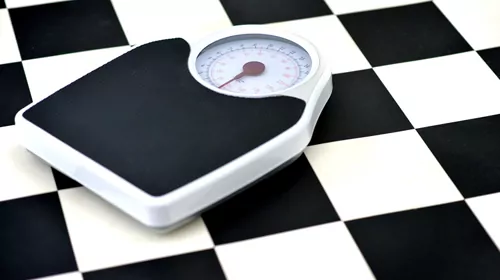We all get concerned about our appearance and see things we’re not happy with, but for people with Body Dysmorphic Disorder (BDD) or body dysmorphia, these perceived flaws in their appearance become all they can think about. Body Dysmorphic Disorder is an anxiety disorder that gives individuals a distorted view of their bodies. This disorder can be incredibly debilitating and confusing, especially as many of the “flaws” that people with the disorder see aren’t really there.
In this blog, we’ll take a look at what Body Dysmorphic Disorder is, and how you can manage the symptoms or help to care for someone with this disorder.
Body Dysmorphic Disorder Explained
As we mentioned above, Body Dysmorphic Disorder is a type of anxiety disorder that stems from an obsessive preoccupation with some perceived flaw in one’s body image. You might worry excessively about a specific part of your body, spend time comparing your appearance to others, go into a lot of effort to conceal your flaws or pick at your skin to make it smooth. As these thoughts are so difficult to control, they can be incredibly time consuming and have a significant impact on daily life.
There are several symptoms and behaviours from the Diagnostic and Statistical Manual of Mental Disorders (DSM-5) that are used to formally diagnose BDD:
- A preoccupation with one or more slight or perceived defects in their appearance such as skin imperfections or body hair.
- Performance of repetitive and compulsive behaviours in order to try and fix or address their flaws or concerns.
- These behaviours must then have a significant impact on the individual’s life, for example, in their home or social life.
- Distinct from symptoms of an eating disorder.
Body Dysmorphic Disorder can be present in both men and women, but typically in different ways. Men usually fixate on their muscles (muscle dysmorphia), while women tend to focus on beliefs about their bodies or individual aspects of their appearance.
What BDD is Not
One of the most common reasons that people with Body Dysmorphic Disorder take so long to receive treatment is that they’re worried about being seen as self-centred or vain. Vanity is a very different beast. People with body dysmorphia don’t just want to be attractive – they see significant flaws and problems with their physical appearance, and believe that something about their face or body is abnormal or ugly; causing severe emotional distress. To outsiders, these flaws are minuscule or even non-existent, but to a person with Body Dysmorphic Disorder, they are all they can see when they look in the mirror.
Treating Body Dysmorphic Disorder
Body Dysmorphic Disorder is a mental illness, which means the most common ways of medically managing symptoms are through talking therapies such as cognitive behavioural therapy (CBT), and through medications. If you’re worried about any of these symptoms and they’re causing significant distress, your GP will be able to offer you advice and help to develop a treatment plan.
CBT or other talking therapies are a great way to identify the connections between your thoughts about your body image and your behaviours in order to improve your mental health. BDD-focused therapy sessions will work to gradually improve your low self-esteem and help you to feel less anxious. Over time, you’ll be able to face situations that were overwhelming or triggered an anxiety response without feeling self-conscious or afraid. Alongside this, you may be offered a type of medication typically prescribed for mental health conditions called an SSRI, or selective serotonin reuptake inhibitors, to help manage your symptoms.
Self-Led Care for Body Dysmorphic Disorder
Alongside treatment outlined by your GP or another medical professional, there are other things you can do to manage your symptoms. Ranging from in-the-moment solutions to building up external support, you can try some of these techniques to help control your Body Dysmorphic Disorder.
- Mindful Moments
Some of the symptoms of Body Dysmorphic Disorder can cause intense emotions and even panic attacks. This can be incredibly distressing, but there are methods you can try to ease these sensations. Mindfulness exercises in particular can help to bring you into the present moment. Through breathing techniques, you’re refocusing your attention on something other than your compulsive thoughts, which is a powerful tool for overcoming the effects of BDD.
- Support Groups
Body Dysmorphic Disorder can feel like an isolating disorder. No one else seems to see what you see when you look in the mirror or understand what you mean when you say “I’m ugly”. Support groups are incredibly helpful for getting more information about your disorder, advice on how to manage it and practical tips from people who are further in their journey. You’ll also be able to talk to people who know exactly what you’re going through and who can offer you a unique perspective on your experience. Mutual support is a powerful tool in your recovery.
- Journaling and Exploring Your Feelings
Forms of journaling are often suggested to people who struggle with mental health disorders as a way to process their feelings and identify patterns in their behaviour. For those with BDD, it can be a useful tactic for bad days, as it allows you to explore your feelings and thought patterns in your own way and at your own pace. You might be able to recognise specific triggers or things to look out for that you can either discuss with your therapist or look to handle on your own.
- Self-Care and Self Compassion
One of the most difficult techniques for managing your BDD on your own is to practise self-care and self-compassion. Negative self-talk is part of the package when it comes to body dysmorphia, but being able to treat yourself and your body with kindness has been shown to lessen BDD symptoms. We show others more kindness than we show ourselves, so try spending a little time treating your body with the same love that you would a close friend. Whether that’s a bath, some mantras, or even just responding to your negative thoughts with “don’t be mean to my friend” can all help you to show yourself a little more compassion.
Body Dysmorphic Disorder can be an incredibly difficult mental illness to live with on your own, but help is always available. Book a consultation with The Awareness Centre today and begin your journey to recovery with support from our therapists and counsellors.








